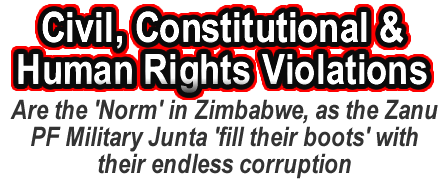Appendix 1
Despite general economic decline and power supply deficiencies, infrastructure made a modest net contribution of less than half a percentage point to Zimbabwe's improved per capita growth performance in recent years. Raising the country's infrastructure endowment to that of the region's middle-income countries could boost annual growth by about 2.4 percentage points. Zimbabwe made significant progress in infrastructure in its early period as an independent state. The country managed to put in place a national electricity network and establish regional interconnection in the power sector; to build an extensive network of roads for countrywide accessibility and integration into the regional transport corridors; to lay the water and sewerage system; and to make progress on building dams and tapping the significant irrigation potential.
Unfortunately, at present the cross-cutting issue across all these sectors is Zimbabwe's inability to maintain and rehabilitate the existing infrastructure since the country became immersed in economic and political turmoil in the late 1990s. Neglect of all sectors due to the crisis has resulted in a generalized lack of new investment (in the power and water sectors in particular), and the accumulation of a huge rehabilitation agenda. Quality of service has declined across the board. The power system has become unjustifiably costly, inefficient, and unreliable.
The condition of roads has deteriorated to the point that Zimbabwe became a bottleneck on the North-South transport corridor. Rural connectivity hardly exists. Failure to treat potable water, along with the deterioration of the water, sanitation, and garbage disposal systems, was responsible for the spread of cholera in 2008. By 2010 cholera affected most areas of the country and posed a health threat to neighboring countries. Looking ahead, Zimbabwe faces a number of important infrastructure challenges. Zimbabwe's most pressing challenges lie in the power and water sectors. Inefficient and unreliable power supply poses major risks to the economy, while the maintenance and upgrading of existing power infrastructure no longer looks to be affordable. At the same time, overhauling the water and sewerage system is imperative for curbing the public health crisis.
Citation: “Pushak, Nataliya; Briceño-Garmendia, Cecilia M.. 2011. Zimbabwe's Infrastructure: A Continental Perspective. Africa Infrastructure Country Diagnostic;. © World Bank, Washington, DC. http://hdl.handle.net/10986/27258 License: CC BY 3.0 IGO.”
Full text:
https://openknowledge.worldbank.org/server/api/core/bitstreams/17fa0f3e-1dc5-51c0-888c-39337d4897d2/content
Appendix 2
Problematic Infrastructure Factors Affecting Development in the 21st Century for Zimbabwe April 2020
Authors: Bonga Wellington Garikai Dynamic Research Review Rodrick Sithole University of Zimbabwe
[1] Mthuli was here!!


